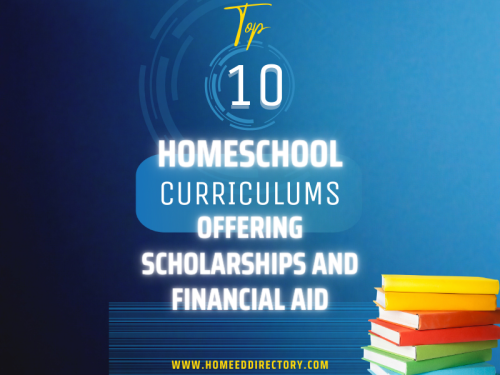What is a Kinesthetic Learner?
Kinesthetic Learners learn best by doing. You know the type-always in the thick of things, getting their hands dirty. The child who takes a toy apart to see how it works, and then puts it back together again. These people learn best by trial and error, role-playing, experimenting, and just doing it. They will repeat a process over and over again until they “get it”. What does this mean for you? Expect a lot of “parts” lying around your house.
These learners are often misdiagnosed as ADD or ADHD. They are oftentimes simply bored. They are unable to sit still and not do something while listening to a lesson. For these reasons kinesthetic learners are often mislabeled and do not do well in a classroom setting, but they excel in homeschool setting when allowed to learn their way.
These learners are generally in tune with their bodies. They have a good sense of balance, and can handle objects with great skill. Kinesthetic learners are natural born dancers, athletes, and dexterous. They know how to use their body language to get a point across, and can be wonderful actors as well as being crafty. (Gilman)
How do I teach my Kinesthetic Learner?
The easiest way to educate your hands-on student is to let him be creative. Role-playing, presenting information to you and his peers (members or your support group, perhaps), group projects, and written work all helps these learners learn. Flash cards are also a great way to assist your child in learning. Being involved in their educational experience by taking notes, drawing pictures, acting out scenes will help your student remember the facts, and ultimately enjoy the work more. (Tannahill)
Allow your child to doodle while reading to her, if your child is old enough to read on her own, have her read to you. This will get rid of the “boredom” factor that some children find in reading…or being read to. Remember, just because your child is not sitting at attention, does not mean she isn’t listening and paying attention.
Be sure to allow ample time for practice of new skills being taught, and provide hands on materials so your child can be involved while learning. The use of highlighters, flash cards, markers, pens and paper will help them be more involved, by taking notes or drawing diagrams during the lessons. Also allow for breaks during lectures. Every 15-20 minutes take a break to stretch and discuss the material. Let your child move around at this time so he can stretch his muscles, and engage his brain in the learning process with discussion.
For math provide manipulative material (pennies work well-they don’t have to be expensive) for your student to use while learning. Seeing the math in use will only enforce the concept, and will give your child something to do with their hands while learning. A happy child is an engaged child.
What will my child be?
Your tactile learner has the ability to be anything he or she wants to be, the occupational paths most suited to her learning style are ones with a lot of movement, whether it be small, exact movements such as surgeons make, or grand gestures of choreographers and dancers. These learners generally excel as actors, artists, athletes, builders, carpenters and factory workers. They also do well with crafts, jewelry making, gardening, farming, and public servant positions such as firefighters and paramedics. The list goes on and on, but your child is the only one who can decide what she will become as an adult.
Further Reading:
A Recipe Book for Tutors: Teaching the Kinesthetic Learner
Intelligence Reframed: Multiple Intelligences for the 21st Century
You're Smarter Than You Think: A Kid's Guide to Multiple Intelligences
In Their Own Way: Discovering and Encouraging Your Child's Multiple Intelligences
Five Minds for the Future
Discover Your Child's Learning Style: Children Learn in Unique Ways - Here's the Key to Every Child's Learning Success
References:
Gilam, Lynn (2001). The Theory of Multiple Intelligences.
Newton, Lyn. (2010). Teaching Kinesthetic Learners.
Tannahill, Krista. (2009) Kinesthetic Learning Style-Strategies for Teaching Hands-on Learners in the Classroom.
Home Educators Resource Directory (HERD) is owned, managed, and maintained by parents passionate about giving their children the best education. The Directory’s mission is to provide resources, support, and information helpful to the diverse community of educators around the globe. Along with offering a rich store of varied resources, the Directory maintains a catalog of local and global support groups and calendars highlighting local events.
The HERD monthly newsletter keeps educators apprised of current homeschool events and supplies informational articles for both the new and experienced. We invite you to stay informed with your own newsletter subscription, explore our many resources by visiting the Directory http://www.homeeddirectory.com/ and check out all the information to be found on our blog.
Permission to reproduce this article granted only with the entire article, bio and all links included.
Kinesthetic Learners learn best by doing. You know the type-always in the thick of things, getting their hands dirty. The child who takes a toy apart to see how it works, and then puts it back together again. These people learn best by trial and error, role-playing, experimenting, and just doing it. They will repeat a process over and over again until they “get it”. What does this mean for you? Expect a lot of “parts” lying around your house.
These learners are often misdiagnosed as ADD or ADHD. They are oftentimes simply bored. They are unable to sit still and not do something while listening to a lesson. For these reasons kinesthetic learners are often mislabeled and do not do well in a classroom setting, but they excel in homeschool setting when allowed to learn their way.
These learners are generally in tune with their bodies. They have a good sense of balance, and can handle objects with great skill. Kinesthetic learners are natural born dancers, athletes, and dexterous. They know how to use their body language to get a point across, and can be wonderful actors as well as being crafty. (Gilman)
How do I teach my Kinesthetic Learner?
The easiest way to educate your hands-on student is to let him be creative. Role-playing, presenting information to you and his peers (members or your support group, perhaps), group projects, and written work all helps these learners learn. Flash cards are also a great way to assist your child in learning. Being involved in their educational experience by taking notes, drawing pictures, acting out scenes will help your student remember the facts, and ultimately enjoy the work more. (Tannahill)
Allow your child to doodle while reading to her, if your child is old enough to read on her own, have her read to you. This will get rid of the “boredom” factor that some children find in reading…or being read to. Remember, just because your child is not sitting at attention, does not mean she isn’t listening and paying attention.
Be sure to allow ample time for practice of new skills being taught, and provide hands on materials so your child can be involved while learning. The use of highlighters, flash cards, markers, pens and paper will help them be more involved, by taking notes or drawing diagrams during the lessons. Also allow for breaks during lectures. Every 15-20 minutes take a break to stretch and discuss the material. Let your child move around at this time so he can stretch his muscles, and engage his brain in the learning process with discussion.
For math provide manipulative material (pennies work well-they don’t have to be expensive) for your student to use while learning. Seeing the math in use will only enforce the concept, and will give your child something to do with their hands while learning. A happy child is an engaged child.
What will my child be?
Your tactile learner has the ability to be anything he or she wants to be, the occupational paths most suited to her learning style are ones with a lot of movement, whether it be small, exact movements such as surgeons make, or grand gestures of choreographers and dancers. These learners generally excel as actors, artists, athletes, builders, carpenters and factory workers. They also do well with crafts, jewelry making, gardening, farming, and public servant positions such as firefighters and paramedics. The list goes on and on, but your child is the only one who can decide what she will become as an adult.
Further Reading:
A Recipe Book for Tutors: Teaching the Kinesthetic Learner
Intelligence Reframed: Multiple Intelligences for the 21st Century
You're Smarter Than You Think: A Kid's Guide to Multiple Intelligences
In Their Own Way: Discovering and Encouraging Your Child's Multiple Intelligences
Five Minds for the Future
Discover Your Child's Learning Style: Children Learn in Unique Ways - Here's the Key to Every Child's Learning Success
References:
Gilam, Lynn (2001). The Theory of Multiple Intelligences.
Newton, Lyn. (2010). Teaching Kinesthetic Learners.
Tannahill, Krista. (2009) Kinesthetic Learning Style-Strategies for Teaching Hands-on Learners in the Classroom.
Home Educators Resource Directory (HERD) is owned, managed, and maintained by parents passionate about giving their children the best education. The Directory’s mission is to provide resources, support, and information helpful to the diverse community of educators around the globe. Along with offering a rich store of varied resources, the Directory maintains a catalog of local and global support groups and calendars highlighting local events.
The HERD monthly newsletter keeps educators apprised of current homeschool events and supplies informational articles for both the new and experienced. We invite you to stay informed with your own newsletter subscription, explore our many resources by visiting the Directory http://www.homeeddirectory.com/ and check out all the information to be found on our blog.
Permission to reproduce this article granted only with the entire article, bio and all links included.





